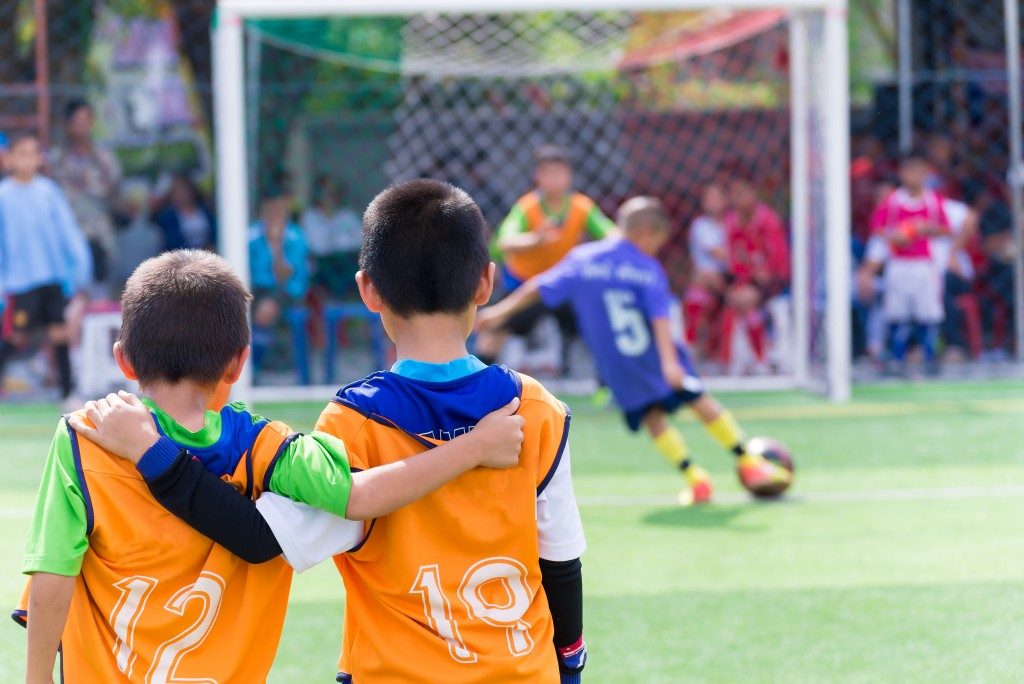There is a lot more to coaching Little League players than just teaching the basics of baseball. Kids don’t naturally get better at the sport after learning the basic hitting, catching, and pitching skills set. Baseball involves accuracy, hand-eye coordination, dexterity, timing, footwork, and other skills, which is why repetition is important in helping young players improve.
Most coaches try to train kids’ reflexes and muscle memory. However, most children are too young to do pressing exercises (like the Arnold Press or rack pulls) that adult players do. This is where drills come in. But not all drills are effective; some only frustrate young players.
Longtime coaches recommend the following drills for developing baseball strengths.
Tee Hitting
Although it seems like a basic drill, especially for players who can already receive pitches, tee hitting can be beneficial for hitters of all ages and levels. Hitting off a tee helps beginners flatten their swing and make solid contact with the ball. For more advanced players, tee hitting can help coaches and batters examine each aspect of the swing. The ball stays fixed, so the only variables revolve around the player’s swing and stance.
For this drill, place the tee on the home plate and have the batter step into the box. With their feet together, players should stride toward the ball and swing, making sure to maintain pressure on their back foot for solid footing.
This helps perfect the stance and form of a player while hitting, resulting in more powerful and more controlled swings. To know whether the kids’ batting skills are improving, a laser speed radar gun can help determine if their hits are getting stronger over time without affecting the swing direction.
Unzip and Release Drill
The Unzip and Release Drill is similar to the common warm-up game of catch. But this version analyzes each component of the throw, helping young players throw with accuracy and precision. The kids form two lines facing each other and toss the ball back and forth, just like in catch. Have the players freeze in different parts of the game so they can concentrate on the next step of the entire motion.
As the players are getting ready to throw, they will “unzip,” which means winding the pitch as far as they can and then releasing the ball when their hand is overhead. Holding their positions, you will then examine everyone’s form and correct those who aren’t winding up correctly.
This helps the young players think about the process of making a throw and keeping them focused. It also limits mistakes, like leading the ball in the dirt or overthrowing. This drill also helps players maximize their throwing speed without compromising accuracy.
Two-ball Drill

This drill involves two different colored wiffle balls. The batter stands on the plate with you across from him or her. Toss both balls at the same time and as you release them, say which color you want the player to hit.
At first, players might feel too much pressure with the mechanics, but over time it’s an exercise they can enjoy. The drill allows them to develop ball vision, trains their reaction times to be quicker, and sharpens their focus. It also helps batters hit breaking pitches, like slurves, curveballs, or sliders.
Importance of Drills For Little League Players
As a little league coach, you know that drills are an important part of practice. But why are they so important? Let’s take a look at three reasons why drills are essential for young ballplayers.
First, drills help players to develop and hone their skills. While it’s true that players can learn some skills by simply playing the game, drills provide a more focused environment in which players can really work on specific skills. For example, if you want your players to work on their hitting, you can set up a drill that focuses specifically on proper swing mechanics.
Second, drills help players to learn how to play the game the right way. In addition to developing skills, drills also teach players the correct way to execute those skills. For example, a drill might focus on teaching players the proper way to field a ground ball. In addition to learning the right technique, players will also learn how to anticipate where the ball is going and what their teammates are doing.
Finally, drills help players to build team unity and camaraderie. When players are working together on a drill, they develop a sense of teamwork and mutual respect. This can carry over into games, where players will be more likely to work together to achieve success.
Although you’re trying to develop and hone your players’ baseball skills, don’t forget that they’re still kids. Too much pressure may discourage them from continuing the sport. The purpose of Little League isn’t only to produce great baseball players, but for kids to learn the value of teamwork, develop an active lifestyle, and of course, have a great time.


